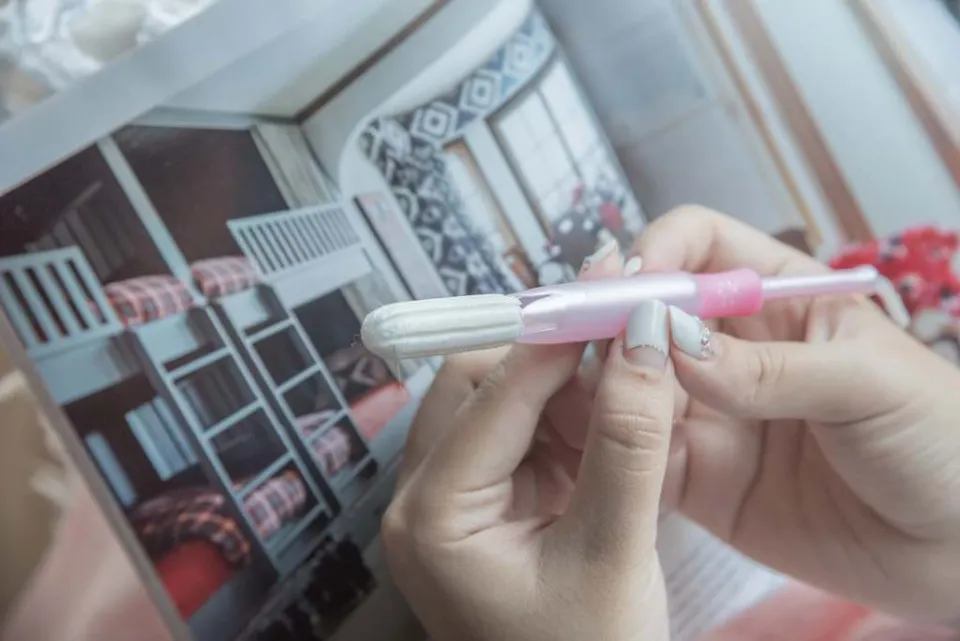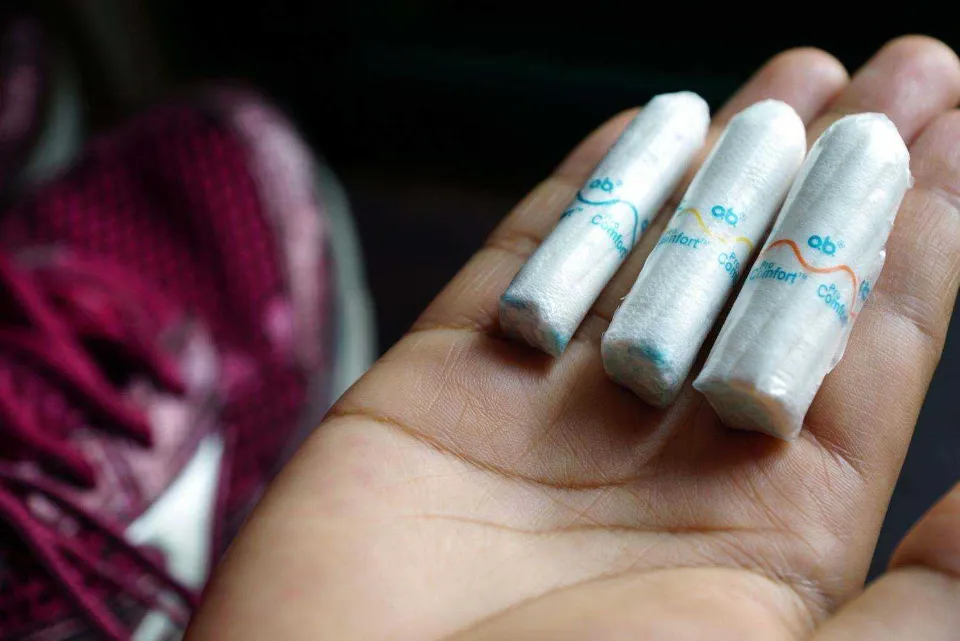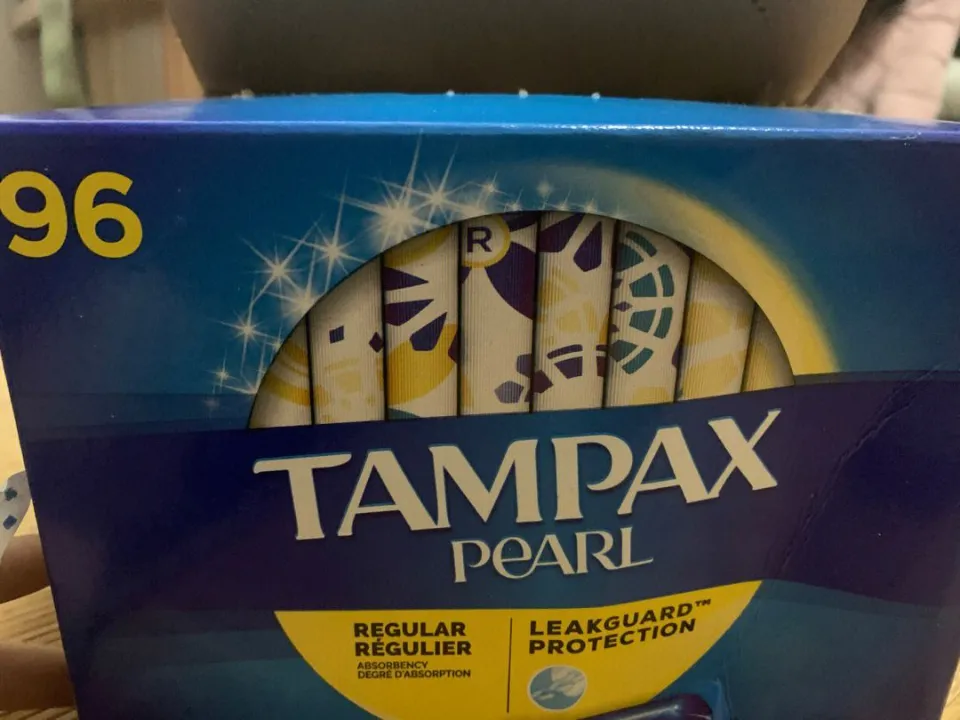
Why Do Tampons Hurt – Reasons & How to Dealt With It?
If you’re anything like me, the process of using tampons for the first time went something like this: you tore open the box of tampons your parents gave you, unfolded the instruction booklet, and started reading. As you scanned through the complex & unclear diagrams, and the advice to “just breathe”, you felt the panic seeping in.
Even though tampons are incredibly absorbent, if there isn’t enough liquid to absorb, your vagina may feel dry and uncomfortable.
Reasons Why Tampons Hurt
You’re New to Using Tampons

When inserting tampons, you might feel anxious or nervous if you’ve only recently started using them. It’s possible that as you begin to insert, this will cause your muscles to tense up. Tampon insertion is a skill that can take some practice, so if you’re new to it, you might be more prone to making mistakes.
Some general tips when first inserting a tampon:
- Your muscles may tense up due to anxiety. As you breathe in, try to inhale deeply, and as you exhale, slowly move the tampon forward. To lessen friction as you insert your tampon, you can also lubricate it.
- You might be tempted to put a tampon in straight up when inserting it for the first time. Instead, insert it so that it is pointing at your lower back; this position ought to feel more comfortable.
- You may not have inserted the tampon deeply enough if you successfully insert one but feel discomfort after moving around for a while. Before you push the tampon out of the applicator, your fingers should make contact with your skin while on the grip of the device. Pull your tampon out and give it another try with a fresh one if you believe it may not be deep enough.
Visit our other blog for a thorough explanation of tampon insertion.
You Have Vaginal Dryness
Some of us might experience higher levels of vaginal dryness; not everyone has a WAP as good as Cardi B’s. In actuality, 1 in 6 individuals already experience vaginal dryness prior to menopause. The type of birth control you’re using, hormonal changes following a pregnancy or chemo treatment, or other factors, could all contribute to vaginal dryness. Check out our blog post WAP Part 2: Causes of Vaginal Dryness for additional reasons why you might be experiencing vaginal dryness. Vaginal dryness can make putting a tampon in your underwear painful and uncomfortable.
You Have a Light Flow

While using a tampon, your blood acts as a natural lubricant. But if you have a light flow, particularly at the start or end of your cycle, you might not have enough natural lubrication, which could hurt or hurt when you try to insert a tampon. It’s best to try to stick with the lightest absorbency that will work for your flow if you have a light flow.
The Tampon Itself
It may be the tampon itself that makes putting in a tampon uncomfortable. You might be using a tampon with too high of an absorbency for your flow if you encounter uncomfortable friction when inserting and removing it. You can experiment with decreasing the absorbency level to see if it facilitates insertion. It’s possible that the fragrance, dyes, or synthetic materials in your tampon are to blame for any skin sensitivity you experience while using them. Always try to buy tampons with open ingredient lists, and if you are irritated, try using 100% organic cotton tampons to see if those work for you. It is best to consult a physician if any irritation continues.
You Have a Pelvic Floor Condition
Many medical conditions can make it painful to insert a tampon. These ailments may result in tightening of the muscles in your pelvic floor, increased vaginal dryness, or increased sensitivity of your skin. Some conditions may include:
- Vaginismus
- Pelvic organ prolapse
- Endometriosis
The best course of action, if you think you might have one of these ailments, is to consult a medical expert who can better understand your situation.
Using lubricant could make the process easier if you are currently receiving treatment for vaginismus and are ready to try using tampons once more.
How to Deal With?
Take a few deep breaths to relax and unclench your muscles prior to inserting. The tampon insertion process might be more challenging if your body is under stress and your muscles are tensed.
The ideal insertion position should be one that is comfortable for you. For the most part, this involves either sitting, squatting, or standing with one leg on the toilet’s corner. Your vagina will be at an angle in these positions for best insertion.
Examining various tampon types can also help to lessen discomfort.
If you’d rather insert tampons with your fingers, there are also options with applicator-free tampons.
Wash your hands both before and after inserting any applicator type you decide on.
Are You Supposed to Feel the Tampon After Insertion?
Tampons ought to be barely noticeable when properly inserted, or at the very least ought to be comfortable to wear.
Every body is unique, of course. The sensation of a tampon may vary from person to person. However, even though those people might be able to feel the tampon inside of them, it shouldn’t ever be painful or uncomfortable.
Do Tampons Make Cramps Worse?
According to ob/gyn Sameena Rahman, MD, tampons do not exacerbate cramps. “Period cramps are due to contractions in the uterus,” she says, and tampons do not come into contact with the uterus or have anything to do with the contractions that may come from the uterus. According to ob-gyn Michael Green, MD, toxic-shock syndrome, which can make cramps worse, can develop if you leave your tampon in for an unsafely extended period of time. According to the FDA’s advice, you can prevent this by changing your tampon every four to eight hours.
How Do You Know Which Size to Use and When?
How heavy your flow is determines the size of your tampon. Each person’s period is different, so you might notice that some days are heavier than others.
The first few days of your period are usually the heaviest, and you might discover that a tampon doesn’t hold you as long. If you’re quickly using through a regular-sized tampon, you might think about using super, super plus, or super plus extra tampons.
You might notice that your flow is lighter as your period draws to a close. You might only need a light or junior tampon as a result.
Since they have a smaller profile and are easier to insert and remove, light or junior tampons are also excellent for beginners.
What About During Removal?
The same general principle applies to getting rid of something: Take a few deep breaths to unwind your body and loosen your muscles.
Pull down on the string to remove the tampon. There is no reason to hurry the procedure. You need to pull gently and maintain a steady breath in order to make it more comfortable.
It may be more painful to remove dry tampons that haven’t been in for very long or that haven’t absorbed a lot of blood.
They don’t feel as lubricated as tampons that have absorbed more blood, so this is normal.
Why Not Just Use a Pad?
It’s perfectly acceptable to use a pad instead of a tampon if doing so hurts. The needs of every person’s lifestyle might not, however, be met by a pad. Others may find them constricting when wearing specific types of clothing, and some activities, like swimming, are simply incompatible with pads. Some people may find them uncomfortable to wear while traveling or exercising. It’s crucial to pick the product—whether it’s a pad, tampon, menstrual cup, pair of period underwear, or any combination of these—that best fits your needs and lifestyle.
What If It’s Still Uncomfortable?
If your first attempt isn’t the most comfortable, don’t be concerned. If you’re just starting out with tampon use, it might take a few tries before you find a good rhythm.
Walking around can also ease any pain experienced at the time of initial insertion because your tampon will usually move to a more comfortable position as you move about your day.
What Period Products Can You Use Instead?
There are a number of other menstrual products you can use if tampons are still making you uncomfortable.
Pads, also known as sanitary napkins, are a good place to start. These adhere to your underwear and collect period blood on a cushioned surface. To avoid leaks and stains, some options have wings that fold under your underwear.
Despite being washable and reusable, most pads are disposable. However, some are made of organic cotton. Typically, this kind of pad uses buttons or snaps rather than adhesive to fasten to the underwear.
Period panties, also known as period underwear, are more environmentally friendly options that use an ultra-absorbent material to catch period blood.
Menstrual cups are the final option. These cups are constructed from soft plastic, silicone, or rubber. They sit inside the vagina and catch mens
Conclusion
Today, we looked at five potential causes of tampon discomfort as well as some potential solutions for a pain-free insertion. Keep in mind that you should talk to your doctor about other options if you feel excruciating pain while inserting a tampon.
FAQs
Why Do Tampons Feel So Uncomfortable?
Inserting a dry tampon could also be the source of your discomfort if there isn’t enough moisture because your flow is too light. No matter how soft, a dry tampon will rub against your dry vagina, causing friction.
Why Does It Hurt to Put a Tampon in for the First Time?
Your menstrual flow may not be strong enough to make you sufficiently wet to facilitate the insertion of the tampon, which could explain the pain and difficulty you experience. Naturally, it’s also conceivable that the opening in your hymen is quite small.
How Do I Know If My Tampon is Full?
Give the tampon string a gentle tug to check if it needs to be changed; if it begins to come out easily, it’s time to change; if not, you can typically wait a little while longer. Just keep in mind that 4 hours is about right for tampons, and never leave one in for more than 8 hours.





Average Rating